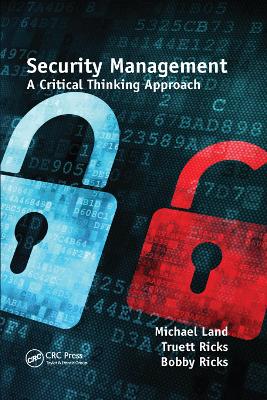Occupational Safety & Health Guide
2 total works
How far would or should you go to feel secure? While everyone wants safety and security, the measures to achieve it are often viewed of as intrusive, unwanted, a hassle, and limiting to personal and professional freedoms. Yet, when an incident occurs, we can never have enough security. Security Management for Occupational Safety provides a framework through which occupational safety practitioners can critically examine their organizational environments and make them safer while assuming a best possible relationship between obtrusion and necessity.
This book examines the diverse factors involved in occupational management—planning, people, budget, information, and preparedness—to present an accurately balanced picture of safety functions. It uses a critical thinking approach to interpreting data as a tool for providing more effective occupational safety management. The book discusses core security management competencies of planning, organizing, staffing, and leading while providing a process to critically analyze those functions. It stresses the benefits of using a methodical critical thinking process in building a comprehensive safety management system, addressing information security, cyber security, energy-sector security, chemical security, and general security management utilizing a critical thinking framework.
The author doesn’t focus on how to secure, guard, or protect. While there are commonalities in many aspects of occupational risks and hazards, all are going to be unique. Instead, he guides you through each stage of critical thinking, emphasizing the ability to articulate the differing aspects of business and security management by reasoning through complex problems in the changing organizational landscape. The book not only provides fundamental concepts in security but it also creates informed, critical, and creative security managers who communicate effectively in their environment and make informed well-thought-out judgments to tailor a security program to fit a specific organization.
Security is a paradox. It is often viewed as intrusive, unwanted, a hassle, or something that limits personal, if not professional, freedoms. However, if we need security, we often feel as if we can never have enough. Security Management: A Critical Thinking Approach provides security professionals with the ability to critically examine their organizational environment and make it secure while creating an optimal relationship between obtrusion and necessity. It stresses the benefits of using a methodical critical thinking process in building a comprehensive safety management system.
The book provides a mechanism that enables readers to think clearly and critically about the process of security management, emphasizing the ability to articulate the differing aspects of business and security management by reasoning through complex problems in the changing organizational landscape. The authors elucidate the core security management competencies of planning, organizing, staffing, and leading while providing a process to critically analyze those functions. They specifically address information security, cyber security, energy-sector security, chemical security, and general security management utilizing a critical thinking framework.
Going farther than other books available regarding security management, this volume not only provides fundamental concepts in security, but it also creates informed, critical, and creative security managers who communicate effectively in their environment. It helps create a practitioner who will completely examine the environment and make informed well-thought-out judgments to tailor a security program to fit a specific organization.

